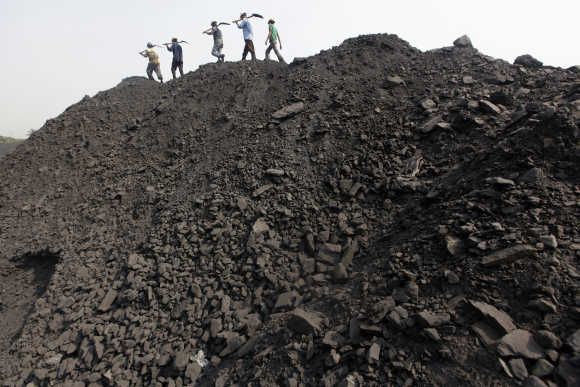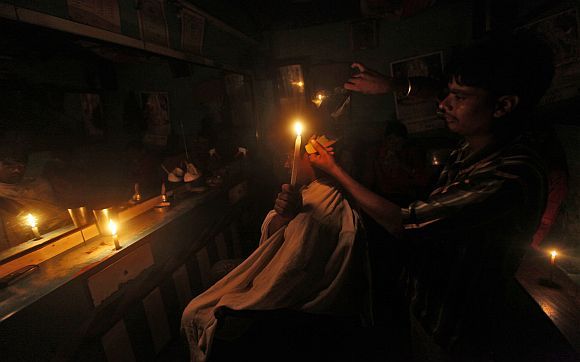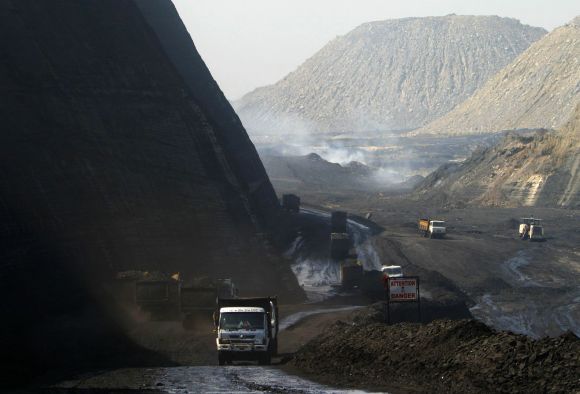 | « Back to article | Print this article |
Coal mining DESTROYING 1.1 mn hectares of forests!
A geographic information system analysis released by Greenpeace India -- How Coal Mining is Trashing Tigerland -- determines that coal mining threatens over 1.1 million hectares of forest in just 13 coalfields in Central India.
Unbelievable, but that's almost twice the area of India's top five metros combined that stands to be destroyed if India continues to rely heavily on coal to supply its energy.
In fact, this is just the tip of the iceberg as only 13 coalfields have been analysed out of over 40 in central India. Of the 1.1 million hectares of forest at risk, over 185,000 hectares are inhabited by tigers, over 270,000 hectares by leopards and over 55,000 hectares by elephants. One can only imagine the fate of all these animals and other wildlife if the forests are destroyed to reach the coal underneath.
Please click NEXT to read further...
Since 2007, coal mining has destroyed 26,000 hectares of forests
Significantly, since 2007 India's coal production capacity has doubled and simultaneously over 26,000 hectares of forest was destroyed for coal mining in this period.
The Planning Commission projects a whopping 250 per cent increase in domestic coal consumption by 2031-32. Since importing coal is expensive most of this requirement would have to be fulfilled from Central India, where over 80 percent of India's coal is located, much of it under the forests.
Forest corridors connecting eight tiger reserves -- including some of India's finest such as Kanha and Bandhavgarh are at risk. The Tiger Conservation Authority identified these corridors as essential for the species' long term survival but they are still threatened by the Union coal ministry's ambition to get more coal.
If our last remaining forests are destroyed for mining, along with our varied wildlife, forest communities will also lose their livelihood and homes.
As Ashish Fernandes, Coal Campaigner, Greenpeace India says, "This study focuses on coal mining's impact on mega fauna, but the loss of forests is also going to hit the communities dependent on them hard. The era of cheap coal is over -- across India, from mine to power plant, communities are questioning coal as a source of electricity and asking for sustainable alternatives."
'The recent blackout is a wake up call for the govt'
The recent blackout in North and North-Eastern India, plunging 600 million people in darkness should urge the government to change their outlook on India's energy mix.
While about 66 percent of India's electricity is generated from coal, the huge potential of solar and wind energy is neglected.
Strongly stating that the blackout should not become a reason to fast-track coal projects, Fernandes, said, "The blackout is a wake-up call for the government to revisit its unsustainable energy policy. We need to diversify our power generation sources as well as our distribution model -- renewable energy and energy efficiency can no longer be given step motherly treatment. Locking the country into a coal intense pathway is going to be disastrous for the country, and will not guarantee us power."
The coal lobby, citing a shortage in coal reserves, has been demanding that the Ministry of Environment approve all coal mining proposals in forest areas. However, in April 2012, Environment Minister Jayanthi Natarajan stated that clearances granted by her hinistry for coal mining and coal-fired power plants surpass the Indian government's own targets till 2017.
Immediate moratorium on forest clearances for coal mining required
Given that clearances in excess of government targets have already been granted, Greenpeace is demanding an immediate moratorium on forest clearances for coal mining and the exclusion of all wildlife, forest corridors and areas inhabited by endangered species from existing coalfields.
Also, no forest clearance must be granted without both the Ministry of Environment and Ministry of Tribal Affairs first ensuring that the Forest Rights Act is strictly implemented.
Thirdly the process for determining criteria of areas that will be kept off limits to mining and power plants must be open for public input.
To achieve this goal Greenpeace started a petition on July 19 asking Prime Minister Manmohan Singh to stop coal mining in forest areas.
While almost 30,000 people have already signed the petition, Greenpeace is aiming for 100,000 sign ups to prove to the PM that we all value our forests and wildlife and will not tolerate its destruction.
The petition and signatures will then be delivered to Prime Minister Manmohan Singh in October at the Convention on Biological Diversity that India is hosting in Hyderabad.
TOP photo features of the week
Click on MORE to see another set of PHOTO features...




